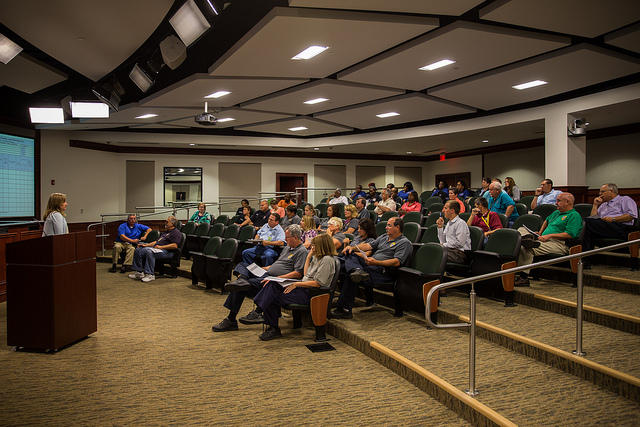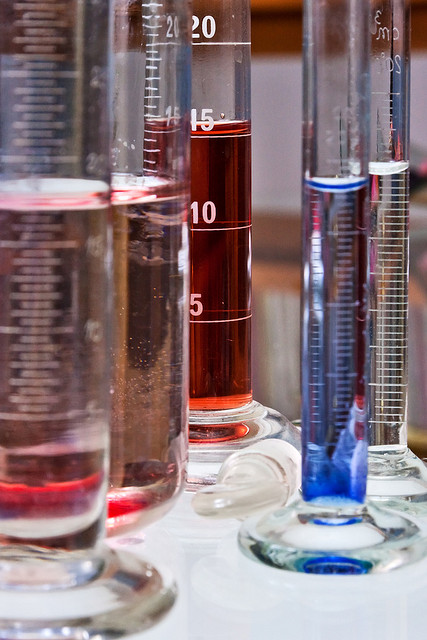5 Tools for an effective pretreatment program
- Jun 18, 2015
It’s been said many times: “The best defense is a good offense.”
While ordinances, fines and consistent enforcement are essential, they are not sufficient for effective pretreatment. After all, the goal of a pretreatment program is to maintain water quality, reduce the load on water treatment plants and minimize sewer system maintenance costs.
The best way to achieve those goals is to prevent pretreatment ordinance violations in the first place.
Why pretreatment is vital
Noncompliance with pretreatment regulations creates serious problems, both for the violator and for the wastewater system operator. Water safety is threatened and, in some cases, the waste water system can face substantial extra costs.
This is especially true with fats, oils and grease from commercial kitchens, possibly the most common and widespread type of pollution subject to pretreatment.
The U.S. Environmental Protection Agency estimates that blockages from fats and grease cause 47 percent of all reported sewer system blockages nationally. Elsewhere in the world, it’s likely costs are similar or perhaps even higher.
In London, sewer officials put together a team of workers whose sole job was to remove hundreds of thousands of pounds of accumulated grease in the city’s sewers. No doubt, you don’t want that in your community. If you want to attract national and international publicity, there are better ways to do it.
Kitchen challenges
But pretreatment of waste from commercial kitchens has some unique challenges associated with it.
While pretreatment of wastewater from other industrial users, such as factories, is very important, those larger industrial facilities are more likely to have staff who understand the importance of pre-treatment, and how to handle it.
But restaurants, catering companies, cafeterias and other food service establishments usually don’t have in-house expertise in this area. In fact, the skills and knowledge of the individuals managing these organizations varies widely. And while many of them may be talented cooks or provide great customer service, chances are pretreatment is not something they have any formal training in.
Therefore, an effective pretreatment program may take some extra steps to single out these facilities and help them stay in compliance.
Your pretreatment toolbox
There are several items that could go into your pretreatment toolbox. The more of these you can manage, the more likely you are to prevent serious and expensive problems. (And along the way, you’ll probably also minimize conflicts with restaurants and other system users.)
1. A clear ordinance. Most pretreatment ordinances — which in the United States are required under federal law — forbid the discharge of excessive amounts of fats, oil and grease (FOGs) into the sewer system. These ordinances are usually straightforward, and often also list pretreatment system requirements and maintenance standards.
Click here for a sample ordinance.
Tip: If your pretreatment ordinance hasn’t been updated in a while, it’s useful to consider if it could be amended in ways that would actually make it easier for users to stay in compliance by allowing them to use more modern pretreatment technology.
Though even the best ordinance might be perfectly clear to you, to an untrained food service manager or owner, some additional explanation might be in order.
Consider drafting a summary or FAQ that explains the pretreatment ordinance requirements in simple, nontechnical language, or even uses pictures and diagrams to help explain it.
Your pretreatment ordinance information should also include, either in the ordinance or in a summary, a list of facilities that are required to have a grease trap or other pretreatment system. Does a coffee shop need a grease trap? What about a bakery or an ice cream parlor?
2. Communication and training material. Even if you’ve put together a clear ordinance and a nontechnical summary of it, you can help food service establishments remain in compliance.
For example, you may want to put together some basic fact sheets or flyers downloadable PDFs that managers and facility owners could print out and post in their kitchens or use in training classes. Those might cover:
The proper way to dispose of grease, food solids and other kitchen waste.
Checklists for properly maintaining grease traps and grease interceptors.
Instructions about washing woks, range hoods, deep fryer units and other pieces of equipment that accumulate a lot of grease. In many cases, manufacturers of these items may be able to provide useful information.
In addition to these resources, you might even consider annual or semi-annual free training classes for commercial kitchen managers. Entrepreneurial pretreatment coordinators may also look to partner with culinary programs at local community colleges, cooking schools or other institutions to further spread the word.

3. A “FOG Fighter” network. Your allies in crafting and maintaining an effective pretreatment program are those professionals who are dealing with plumbing systems, commercial kitchens and grease traps everyday in your community. That includes plumbers, general contractors, building inspectors and plumbing inspectors, grease trap maintenance companies and the like.
Consider creating an email list with as many of these people on it as possible to help get out the word about pretreatment issues. This would also be a great way to publicize training and distribute informational materials. And you can ensure that they’ll turn to you when they have questions about pretreatment.
In addition to information you may create for kitchen operators, you might also want to create checklists to help these professionals in their jobs as they install, inspect and maintain commercial kitchen plumbing and grease trap systems.
These professionals can also act as your eyes and ears in the community, alerting you to potential problems before they become emergencies.
4. A list of commercial kitchens. In large cities, there could be literally thousands of commercial kitchens: restaurants and food-sellers of all kinds, institutional dining halls and cafeterias, catering companies, and food manufacturers and wholesalers. Even in small communities, there are probably many more of these facilities than one would guess just by driving down the street.
A database of all these facilities, including address and contact information, can be an invaluable tool. If you don’t already have such a list, you might consider creating one. Consider pulling from existing local regulatory sources, such as building permit files and health inspector records
With this database in hand, you have a tool for proactively communicating to these establishments to help them in better complying with pretreatment regulations. You also have a tool that may come in handy when you encounter a problem and need to figure out what facility is causing it.

5. A testing program. State and federal regulators typically will conduct periodic audits of local water and sewer systems. You’ll be prepared for those audits if you manage an ongoing testing program.
You or one of your colleagues probably already does at least some testing, minimally, at your treatment plant. But consider implementing routine testing throughout your wastewater transport system.
Look for elevated levels of fats, oils and grease as well as other proscribed chemicals. Such testing can potentially alert you to problems before they become emergencies that will require expensive maintenance.
If you find elevated levels of grease that you suspect came from a commercial kitchen, your database of commercial kitchens can help you pinpoint the source and make sure the establishment’s owner implements a solution.
Other keys for an effective pretreatment program?
Naturally, pretreatment program requirements will vary depending on local conditions. Development density, the types of users (restaurants vs. industrial plants, for example), the age of the local wastewater infrastructure and other factors all play a role.
And, unfortunately, every pretreatment coordinator is faced with limited resources. There are probably things you’d like to do but simply don’t have the time or money to implement.
Nonetheless, we know there are a lot of smart, creative pretreatment coordinators working across the country. Networking with peers at conferences and training events is a great way to pick up ideas on creating a more effective pretreatment program.
Photo credit (top): Photo via City of Charleston
Photo credit (bottom): Photo via Horia Varlan






